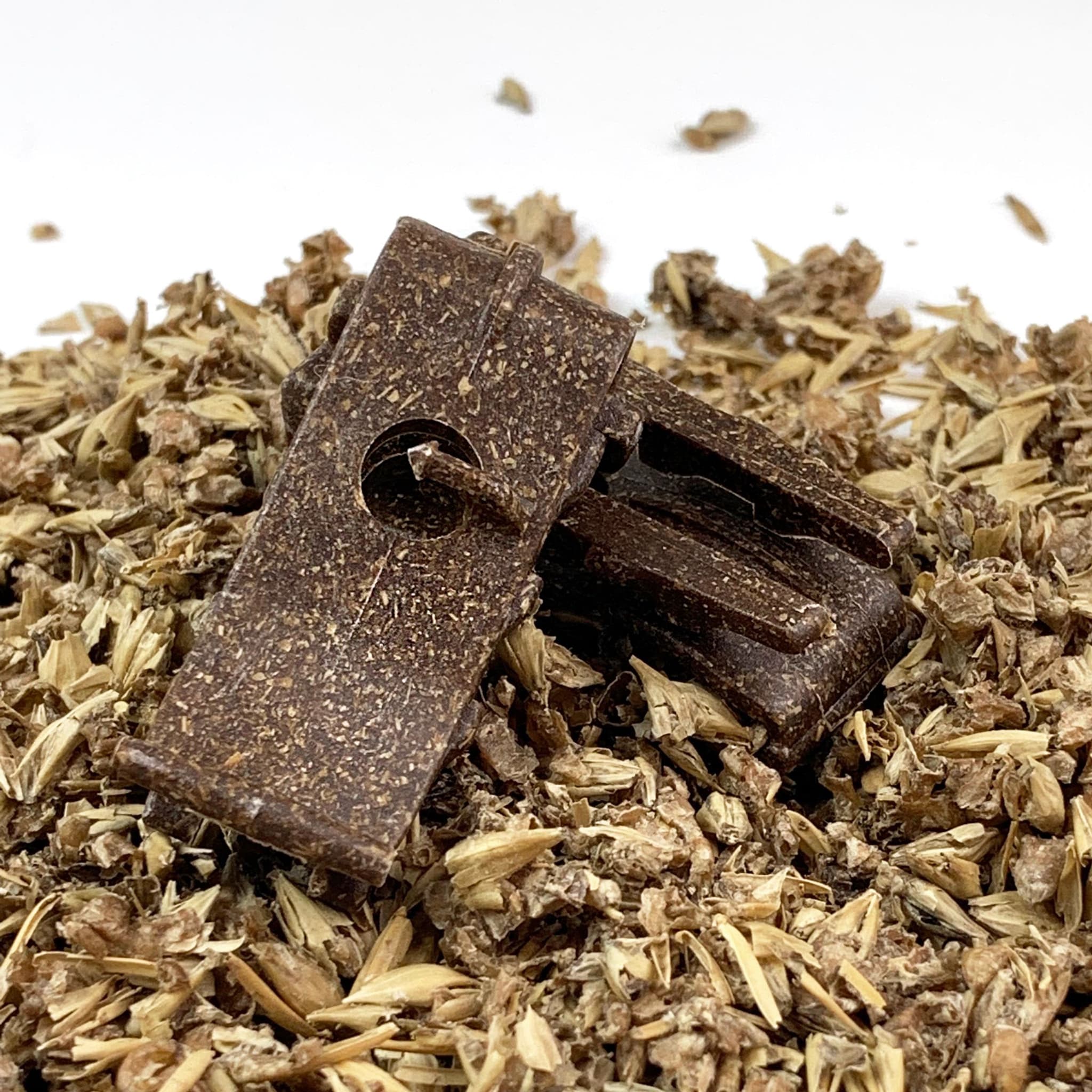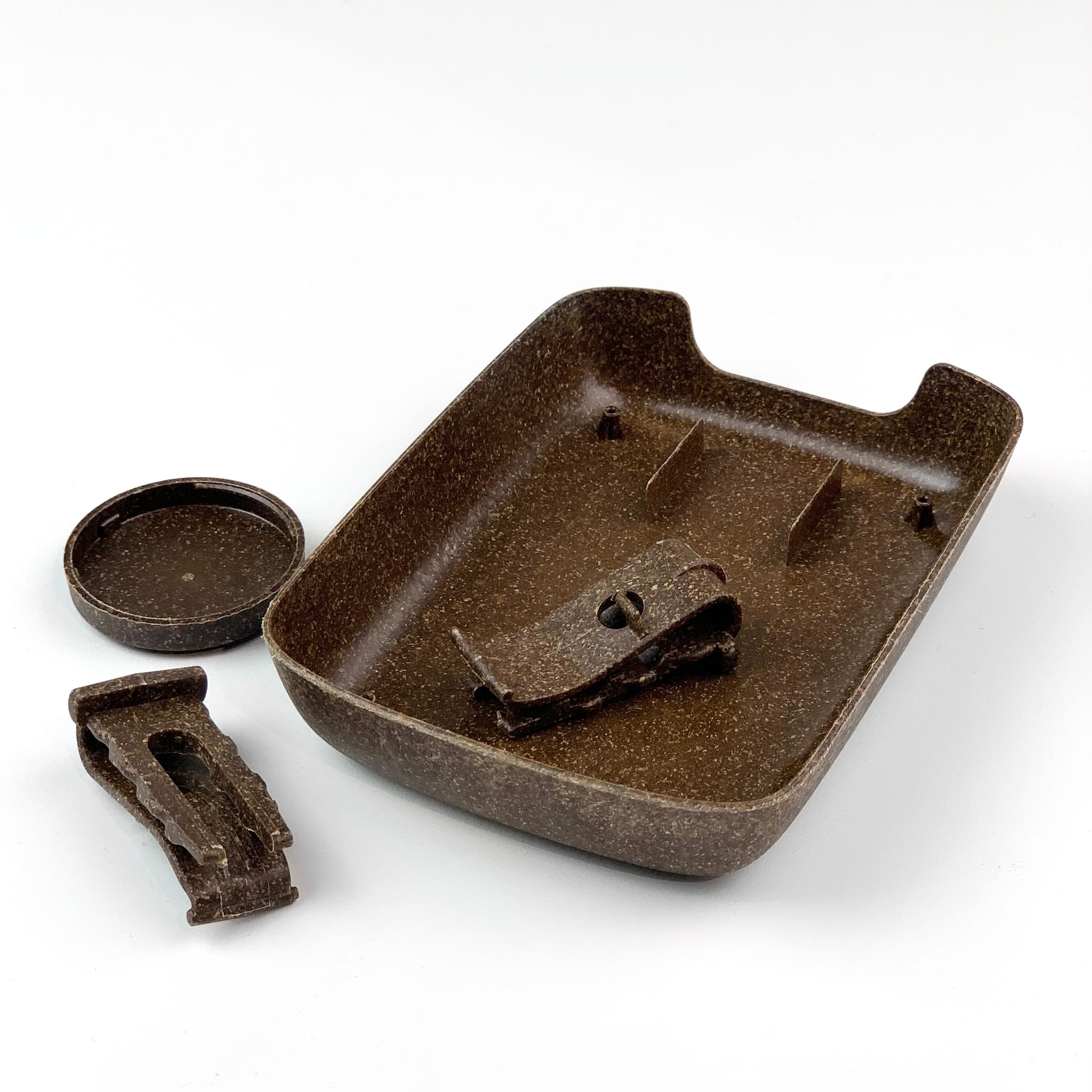1. Granulous is made from brewery waste, specifically spent grains. Could you explain the process of transforming these agricultural by-products into a biocomposite material, and how does it compare to traditional plastic alternatives in terms of performance and sustainability?
When discussing this by-product, we start with the brewing process and the phase at which the spent grains are extracted. The process is called Mashing: crushed grains are mixed with hot water, where enzymes from malt break down starches into sugars, creating a sweet liquid called wort. After mashing, the liquid moves to boiling, and the grains are separated from the kettle. These grains are warm and highly moist, up to 80% moisture content, which means they spoil quickly.
We have developed a method to process this material through our network to suit the needs of our biocomposite mixture. Our baseline aims to match the technical parameters of polypropylene (PP) without compromising the maximum use of grains. Performance has been proven through various tests on products ranging from 0.8 mm to 2 cm in wall thickness.
Compared to traditional plastics, Granulous is significantly more sustainable: it contains no harmful or toxic materials and leaves no trace in the soil. Our next phase targets gardening, forestry, agriculture, and viticulture products, where we add nutrients to improve soil conditions and support plant growth — benefits impossible with traditional plastics.
2. As a material derived from waste, how do you assess the quality and durability of Granulous in various applications? Can you walk us through the material’s key properties, such as water resistance, flexibility, and real-world performance?
Through our network and standardized processes, we ensure the material is consistently compounded and produced correctly. This general-purpose grade is designed for injection molding, featuring visual fibers that give products a natural look and warm haptics.
It suits non-technical, short-life products well. For example, its Young's modulus is 1300 MPa, comparable to PP. The natural look and visible grain on the surface add to the aesthetic, with a slight malt odor. The color is naturally dark brown but can be pigmented to other dark shades. Molded products are soft, smooth to touch, and offer a degree of flexibility.

3. Granulous is marketed as a biodegradable, home-compostable alternative to plastics. What challenges did you face developing a material that breaks down naturally, and how did you ensure it avoids harmful residues like microplastics?
We faced no significant problems here. From the start, we chose the right natural ingredients, and our core material is an upcycled side stream. Since no harmful materials are used, the material is safe for nature and won’t leave harmful residues.
4. The production of Granulous involves a significant reduction in CO2 emissions by using agricultural waste. Could you share more about the lifecycle of Granulous and how sourcing and production contribute to sustainability?
By maximizing grain use in our material matrix, we significantly reduce CO2 emissions. Our Life Cycle Assessment (LCA) includes Scope 3 emissions and shows results lower than average bioplastics. Although this is ongoing work, we expect emissions near zero with future developments.
All proteins, sugars, and minerals are extracted from the grains by our partners and used, for example, to replace meat proteins in food — what we call "sustainability with steroids."

5. With sustainability central to your work, how do you envision the role of biocomposites like Granulous in future consumer goods, especially in high-demand sectors such as packaging, fashion, and home goods?
I see these materials becoming more obvious than recycling alone. Recycling is necessary but won’t fully solve plastic waste. Granulous-type materials are easy to process with no changes needed in manufacturing—a "plug-in" solution for many products without harming nature.
The main challenge is pricing, but with larger quantities, regulations, and consumer demand, it’s only a matter of time before the market shifts.
6. Granulous uses a unique blend of spent grains and bio-based binders. Can you explain the technical considerations behind selecting these ingredients and how they affect strength, biodegradability, and utility?
We collaborated with VTT’s professional team to develop this material. After testing dozens of recipes, we found a perfect match with high grain content that also meets manufacturing parameters. The grains complement the binders, filling gaps in each other's properties.
Some challenges remain, but as we begin polymer activities around grains, we’ll expand features and use the side streams more efficiently.

7. Sustainability requires careful end-of-life consideration. How does Granulous decompose in various environments, and how does it support sustainable waste management compared to traditional plastics?
Granulous degrades in normal landfill conditions and is made of home compostable-certified materials. Its high natural fiber content means it doesn’t require industrial composting to break down.
Currently, Granulous cannot be recycled with other plastics; waste management focuses on bio-waste, compost, or energy recovery. Our main goal is that if Granulous products escape recycling loops, they won’t harm nature because they degrade naturally. Since over 70% of waste still goes to landfills, this is a critical “backup plan” alongside traditional recycling.

8. Looking ahead, what innovations do you foresee in biocomposites like Granulous, especially for improving properties or expanding applications? How will you push sustainable materials to meet growing eco-friendly demands?
Organic filler materials will grow rapidly due to environmental awareness and stricter regulations. Challenges like higher costs and raw material availability persist, but we have many developments underway.
We haven’t yet fully tapped brewing side streams, and with large volume capacity, lower costs, and strong partners, Granulous will be a game changer in material innovation and replacing traditional materials.








